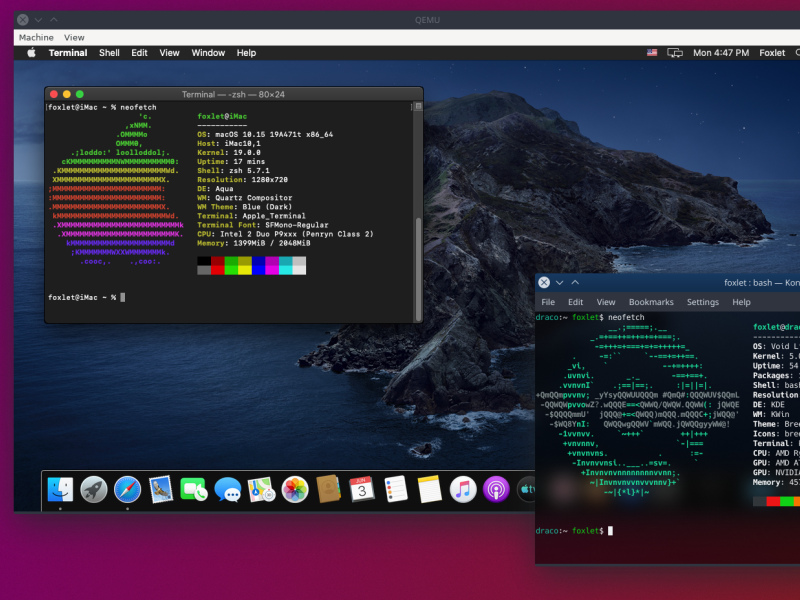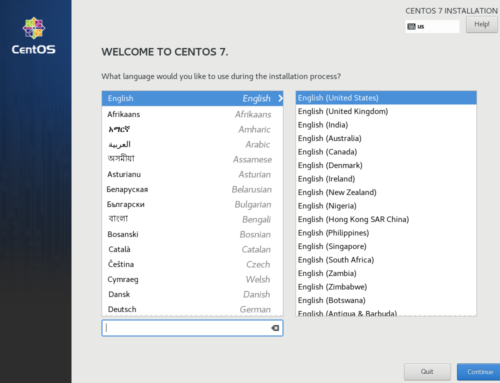Today, a talented OS X enthusiast and TPP community member had Mac OS X 10.15 Catalina installed and working on a Hackintosh, just minutes after the Apple keynote ended. His secret to success where others failed was the Linux kernel virtual machine.
If you’d like to learn how to do this check out part one of our guide, and try asking around on our discord.
Virtually Unbeatable Catalina Install Time
A few minutes after 3:40 PM EST, Foxlet, an active TPP contributor and Hackintosh enthusiast, had the newest version of OS X running with 3d acceleration on a Ryzen system. Many others attempting this ran into issues, mostly related to Clover injection. The difference between Foxlet’s setup and the more ordinary configurations being used by others was Foxlet’s OS X install was virtualized. He offered logs of the recovery image downloads as further proof:

Catalog dump showing the time that the Catalina index was archived by Foxlet’s machine.
Because qemu abstracts the base system and allows the user to define a much more OSX compatible environment than a baremetal install would normally allow, he was able to get it up and running in minutes instead of hours or days. He reported his success on twitter just minutes later:
If you're using macOS-Simple-KVM, the git has already been updated to support the new macOS Catalina beta! pic.twitter.com/EubcVMUOVj
— Foxlet (@FoxletFox) June 3, 2019
Shortly after Foxlet reported success on twitter, another TPP member had a working Hackintosh VM up and running:
let's see pic.twitter.com/WwED55uOGK
— dangered wolf (@dangeredwolf) June 3, 2019
Implications beyond OSX 10.15
The earliest reported baremetal Catalina Hackintosh was up and running 2 hours later, but this time delta demonstrates the practical utility of using a passthrough VM for OS X rather than running it on your hardware in more naive configurations.
The VM can be changed to be more friendly to new releases more easily than hardware can, and certainly faster than clover and/or kexts can be patched to accommodate more niche hardware. As Foxlet points out:
“It really does show KVM is pretty resilient when configured properly. Since kext injection was broken, a standard hackintosh would be left unable to boot as the SMC (FakeSMC) wouldn’t work. Not only does KVM let you run alongside Linux, but it lets you jump in the moment it drops.”
In other words, even if something does go wrong, you still have a functioning system layer you can use to look up info and troubleshoot without rebooting your machine or switching devices.
This utility would be somewhat diminished if you had to rely on software graphics acceleration. However, GPU passthrough, a technique that lets your VM communicate directly with a hardware GPU has been working on OS X guest machines for a while now, so you retain 3d functionality with this method of installation.
Considering the looming implications of the T2 chip, recent build quality problems and issues with baremetal Hackintosh installation on past releases, KVM might be the future for Hackintosh if you value convenience and compatibility.
Images courtesy Foxlet/DangeredWolf
Consider Supporting us on Patreon if you like our work. The site is and will always be ad-free, and we rely on direct support from our audience. If you need help or have questions about any of our articles, you can find us on our Discord. We provide RSS feeds as well as regular updates on Twitter if you want to be the first to know about the next part in this series or other projects we’re working on.






